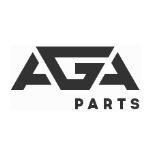A helicopter powered by a Safran engine utilizes 100% sustainable fuel for its flight

The Arrius 2R engine from Safran Helicopter Engines powered a Bell Textron single-engine Bell 505 helicopter on a test flight using 100% sustainable fuel. The American manufacturer announced the achievement on February 21, marking a first for Bell and paving the way for Sustainable Aviation Fuel (SAF), which is derived from biomass (biofuel) or a combination of hydrogen and carbon dioxide (e-fuel).
SAFs currently have a maximum allowable content of 50% on the market, and are not yet permitted for full 100% use, with the remaining fuel being derived from fossil sources. Safran Helicopter Engines’ Deputy Head of Research & Technology Programs, Jean-Baptiste Jarin, highlights that when SAFs are used commercially, they typically make up an average of 30% to 40% of the fuel used.
A first DGA flight with 84% SAF
On February, the Directorate General of Armaments (DGA) conducted a test flight on an NH90 military helicopter in Istres (Bouches-du-Rhône), using 84% SAF in one of its two Arrius 2R engines. This followed Bell’s recent achievement, with the fuel used in the DGA’s test flight being produced by TotalEnergies through HEFA (Hydrotreating of Oils and Fats) technology, using used cooking oil. The SAF used in the test flight had a carbon footprint that was four times lower than that of fossil fuel.
According to Jean-Baptiste Jarin, Bell Textron collaborated with SAF supplier Neste, fuel system components manufacturer GKN Aerospace, and renewable fuels and chemicals provider Virent for the experimental flights. The testing for these flights took place over a period of 12 to 18 months at Bordes (Pyrénées-Atlantiques), on research benches and on the ground.
Aromatics, essential for “drop in” fuels
The SAF fuels used in both experimental flights were “drop-in,” meaning that no modifications were necessary for the engines to use them. The fuel was required to adapt to the engine, and as a result, aromatic hydrocarbons had to be present in the fuel.
Jean-Baptiste Jarin notes that aromatics in fuel serve to lubricate and prevent cavitation, and are typically found in conventional fuels at a level of 16% to 25%. However, the challenge is that these aromatics are precursors to soot and contribute to the formation of condensation trails. Consequently, fuels with less than 10% aromatics are used to mitigate these issues. Additionally, the use of bioaromatics, such as those made from sugar cane by Neste for the Bell demonstration, is strategic since they are counted towards the SAF percentage.
Jean-Baptiste Jarin is excited about the potential to reduce CO2 emissions by 80% to 90% by flying with 100% sustainable fuel, as compared to using fossil fuels. This represents an exciting prospect for decarbonizing the aviation industry. Different approaches are being investigated to achieve this goal, and there are plans to aim for 100% SAF-certified fuel by the end of 2024.
Conflicts of use for biomass and electricity
The adoption of SAF could face certain hurdles, starting with their current cost, which is 3 to 4 times higher than that of fossil kerosene. In the long run, there is a risk of conflicting usage due to the required quantities of biomass and electricity needed to produce hydrogen. This could create significant challenges in terms of the availability and affordability of SAF.
European regulations have mandated that 2% of SAF should be used by 2025, with the goal of increasing this to 20% by 2035 and 63% by 2050. While reaching the 20% target seems feasible, the current available solutions may not be able to achieve the 63% target due to the potential for biomass and electricity conflicts. It is not advisable to monopolize such resources solely for the aviation industry. Therefore, a more intelligent approach is required for the short term, while considering other options for the long term.

